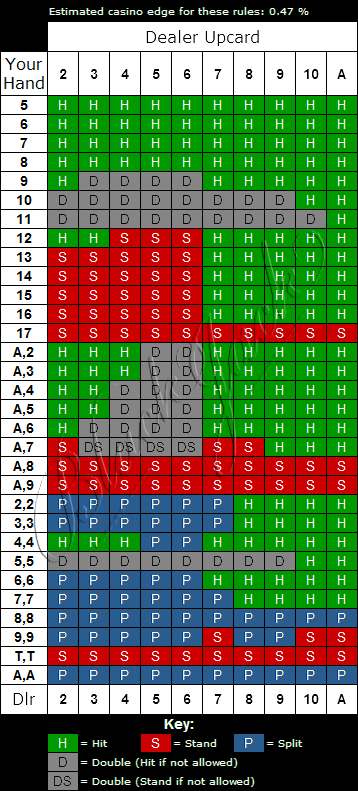Progressive betting systems have long been popular with gamblers. This is probably down to two primary reasons.
- The concept of such systems is really quite simple and they are easy to use.
- 2Many people believe that these systems will guarantee them endless gambling winnings.
Most of the well-known progressive betting systems can be learned quickly. They usually just involve following a straightforward set of rules, so gamblers can implement them without any difficulty at all.
The minimum bet in this system depends on how much you are prepared to lose. So, let’s say you have a $500 bankroll to play blackjack with. With that, we’ll do a $10 Progression System. If you have $100, make it a $2 Progression System, $1,000 will be a $20 Progression System and so on. The betting sequence in the $10 Progression is as follows.
Gamblers can get into difficulty, however, when they believe that these systems actually work. The fact is that they don’t. Progressive betting systems can help you to win some money in the short term, but they don’t actually do anything to influence your chances in the long run. That doesn’t stop some people wasting a lot of money on them though. Many a gambler has been ruined by steadfastly refusing to accept that a system won’t come good eventually.

With that in mind, we’ve provided more information about progressive betting systems on this page. This includes explanations for why they don’t work. We cover the basic concepts, and the two main types. These are positive progression systems and negative progression systems. We’ve also written additional pages with full details of each of the most popular systems.
The 1-3-2-6 system is relatively straight-forward – especially if you have any experience using other betting or card-counting systems.
Here’s how this works:
- Place an even-money bet. For example, place a bet on black/red or even/odd in roulette. For the following steps, we’re going to say we made a $5 bet.
- If your first bet wins, you’ll now have $10. The next step is to make another unit-sized bet – in this example, $5 – to the money that’s already on the table. So, we’ll have $15 total on the table.
- Say this bet wins, too – you’ll now have $30. The next step is a 2, which means we want to leave 2 units on the table, or in this case $10. So, remove $20 from your bet (leaving $10).
- We’re going to say this bet also wins. You’ll now have $20 on the table. But for the last step we want 6 units on the table. So, we need to add another $10 to make our total $30 ($5 x 6 units).
This is where the “3” comes from in the system – it’s 3x whatever your bet is.
If you win this bet, you’ll have $60 on the table. You’ll want to remove this amount, and then on your next round you’ll start the cycle all over with the first step.
That’s all there is to it.
If you make $5 bets, follow this system, and are lucky enough to win 4 times in a row, you’ll have made $70. $60 of that will be profit, as you only made two $5 bets out of pocket (steps #1 and #2).
This is important to remember because whatever you decide your unit (bet sizing) will be, you’ll need to make sure you have the money to make it twice.
In other words, you don’t want your unit to be $100 if you only have a $150 bankroll. Because you’ll need $200 to get through steps #1 and #2.
Everything else will come out of your profits.
Blackjack Betting Systems That Work
However, if you play a game like blackjack, you also need to keep in mind you’ll want money for situations where you’ll need to split or double down on your hand.
Best Blackjack Betting System
Our recommendation is to have enough money on hand to make these bets (if you want to), and to treat any winnings from these plays as a bonus – pull that extra money off the table and continue the system like normal.